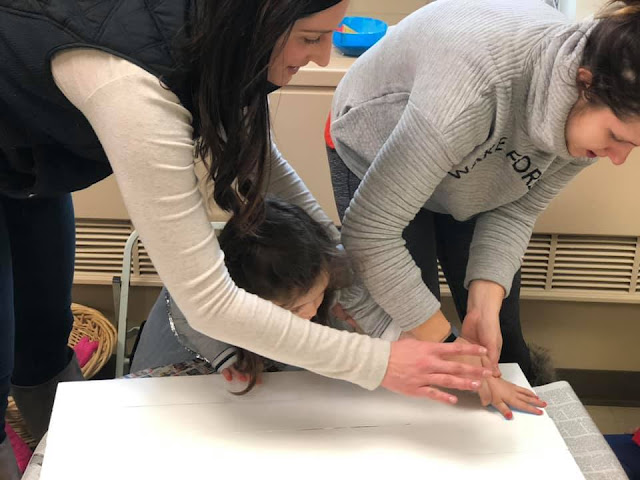This week we continued our Polar Bear unit. During morning meeting we read books and watched videos about polar bears and their habitat. We learned that polar bears live in the Arctic, are great swimmers, have big paws, eat seals, and have great hearing and eyesight! Below are some questions you can ask your Pre-K kid to see how much they remember about Polar Bears!
1.) What are Polar Bear babies called? (cubs)
2.) What do Polar Bears eat? (seals and arctic foxed)
3.) Where do Polar Bears live? (The Arctic)
4.) Polar Bears have skin underneath their fur. What color is it? (Black)
5.) Polar Bears fur appears white, but what color is it? (clear)
6.) A Polar Bear can smell a seal _____ miles away! (20)
CAN/HAVE/ARE - Anchor Chart
An anchor chart is a tool that is used to support instruction and "anchor" the kiddos learning. As we discussed Polar Bears, we created a chart that captures the most important content. An anchor chart builds a culture of literacy in the classroom by making thinking - both the teacher's and the students' - visible. After we completed our chart we used it as a reference tool to review what we have learned about Polar Bears.
Measuring with Polar Bear Paws
The kiddos were asked the question, "How many paws tall are you?" The children took turns measuring each other and counting how many "paws" tall they were. Most of the kids measured 4 paws tall! One of the kiddos noticed that some of the kids needed a half size, so he rotated the paw to make it a half size!! Good thinking Z.B.!
Polar Bear Race - Math Game
This is a perfect game for counting practice. The kiddos rolled the dice, counted the dots, and moved their bear up the correct number of spaces. The bear that reached the top first won!
Snowman Math Counting
STEM Challenge: Can You Build a Den for a Polar Bear?
The Pre-K kiddos were asked to build a den for a polar bear mom and her cubs using only the materials provided - toothpicks and marshmallows.
Blubber Science - How do Polar Bears Stay Warm in the Arctic?
For the experiment we first filled a bowl with snow, ice and water. We then asked the kiddos to place their hand in the water - how does it feel? COLD!! We then created a Crisco glove and then asked the kids to put their hand back in the water while wearing the glove. How does the water feel now? LESS COLD!!
Polar bears do not wear winter coats, mittens, gloves or boots. This blubber science experiment helped the kids feel and see what keeps polar bears warm! What we learned was that blubber or fat keeps them warm. Obviously, polar bears aren't covered in cooking lard like Crisco, but they have their own kind of lard or blubber that really helps out. Polar bears are warm-blooded mammals like us! So that means they have fur. Polar bears use a combination or fur and blubber to keep warm. Thick fur and thick fat (4 inches!) keep these warm-blooded mammals warm in up to -50 degree temps!! Now that's cold!!
Exploring Arctic Ice
Polar Bear Process Art
Process art is all about the experience the children have while they are creating. If it has a nice end product, that's great, but the end product isn't the focus of process art. For our polar bear process art activity the children got messy and used their hands over the white piece of paper with blue and white paint. Between the paint and the white paper was a newspaper polar bear template that we peeled off after the kiddos finished painting and revealed the white paper underneath!
Mystery Reader
This week's mystery reader was Zach's dad, Mr. Bireta! Thank you for coming in and reading to us!
Reminder: NO SCHOOL on Monday!





































































